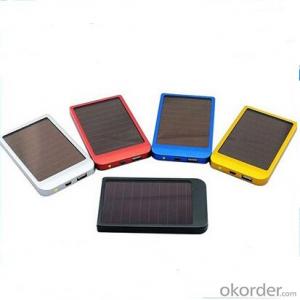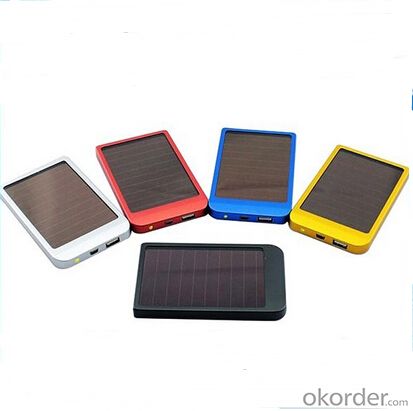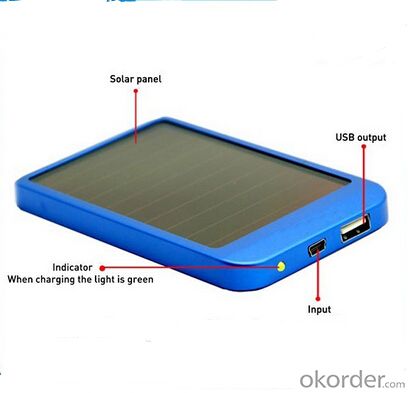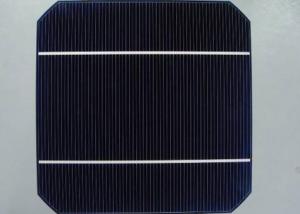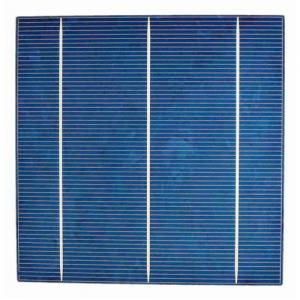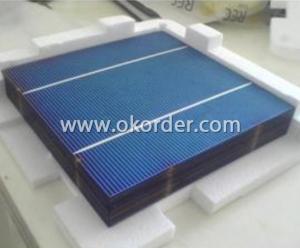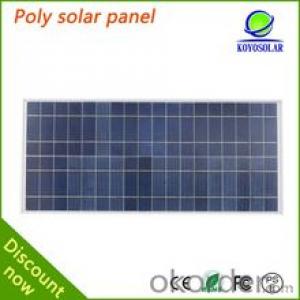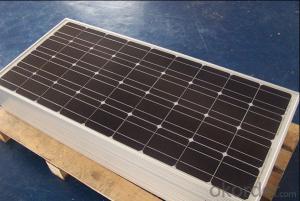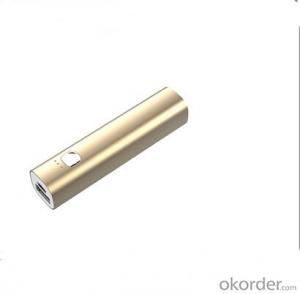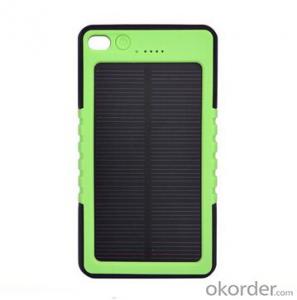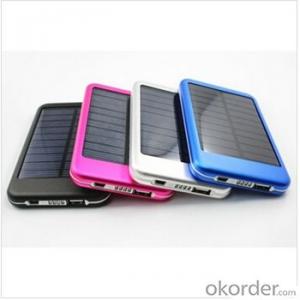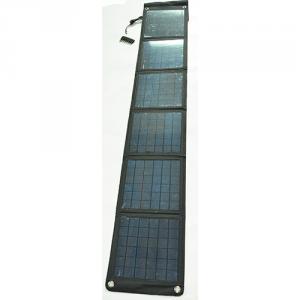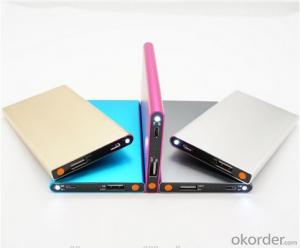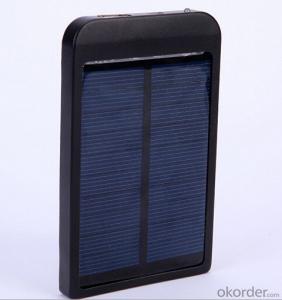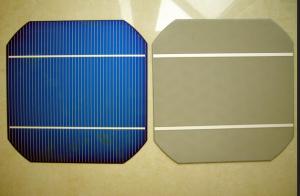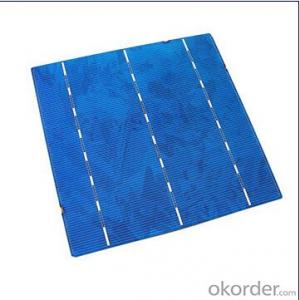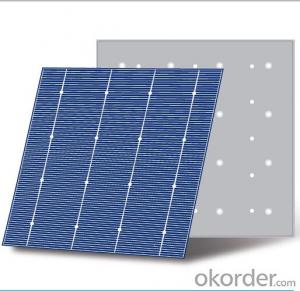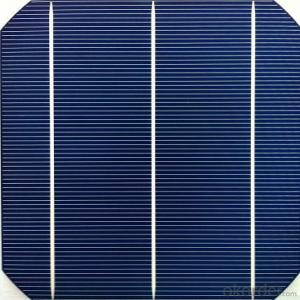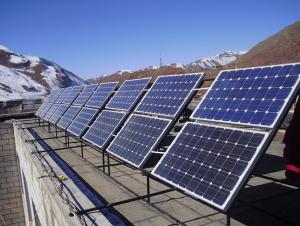Solar Cells Silicon Portable Mobile Phone Solar Charger for 1800/2600/3500mAh Mobiles
- Loading Port:
- Shanghai
- Payment Terms:
- TT OR LC
- Min Order Qty:
- 1000 pc
- Supply Capability:
- 50000 pc/month
OKorder Service Pledge
OKorder Financial Service
You Might Also Like
Solar Charger Description
With built-in high-capacity lithium-polymer rechargeable batteries, The solar power bank can recharge your Tablet ,mobile phones, digital cameras, PDA, MP3, MP4 and other digital products anywhere and anytime. With standard Micro USB and variety of converters configuration, its appearance small and compact aluminum alley design, make you easy to carry, show your elegance and fashion.
1.Case material: aluminum metal case
2.Color: Black,Blue,Red,Gold,Silver
3.Certificate: CE, RoHS, FCC, PSE
4.MOQ: 1000pcs
5.Battery: Lithium polymer ensure safety
6. Solar mobile charger
Advantages of our Solar Power Bank
1. Suitable for nearly all kinds of mobile phones and digital products, which have USB cable connector;
2. Providing several different charging adaptors, Compatible with almost each kind of mobile phone and digital products with USB function;
3. Charging for Iphone, Ipad, Smartphone, PDA, MP3, PSP, GPS, Cell phone, Bluetooth device, some tablet PC and other digital products,
4. With a precise IC pretector to safely aviod over-charging, over-discharging and short circuit,
5. Intelligent single-chip computer control the power, steady and high efficiency.
6. When charging it will not affect answer the phone or calling, to ensure the information unimpeded.
Product Description
Item | solar charger |
Battery type: | Lithium polymer battery |
Battery capacity: | 1800/2600/3500mah |
Input: | DC 5V/ 500mah |
Output: | DC 5V/ 800mah |
Solar Panel : | 0.4w/0.7w |
Size: | 120*70*10mm |
Weight: | 140g |
Self-charging time: | 2-5 hours by adaptor |
Circle life: | >= 500 times |
Color: | Black,Blue,Red,Gold,Silver,etc |
LED indicator: | Yes |
USB : | Micro USB |
Cover case material: | Metal aluminum |
PCBA protection: | Self-designed over-charging,over-discharging,over-current, short-circuit protection provide safe power supply to custormers |
Certificate: | CE,RoHs,FCC,PSE,GMC |
Available brand: | For Iphone,for Ipod,for Ipad,for Samsung, Sony, Cameras,PSP,Bluetooth devices and 95% smartphones |
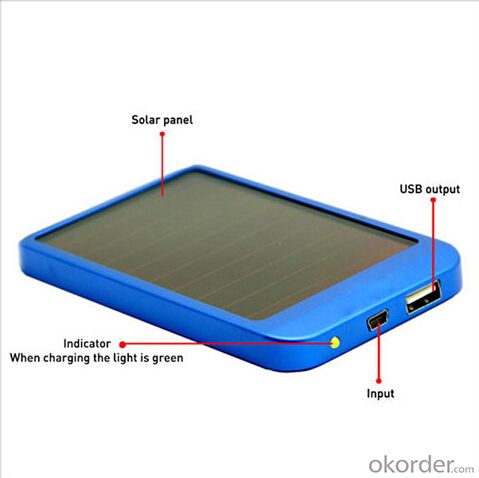
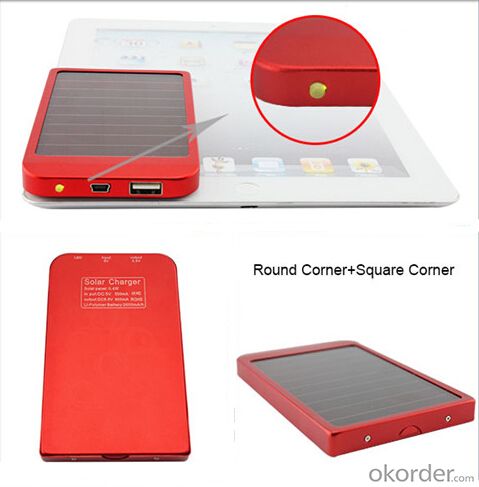
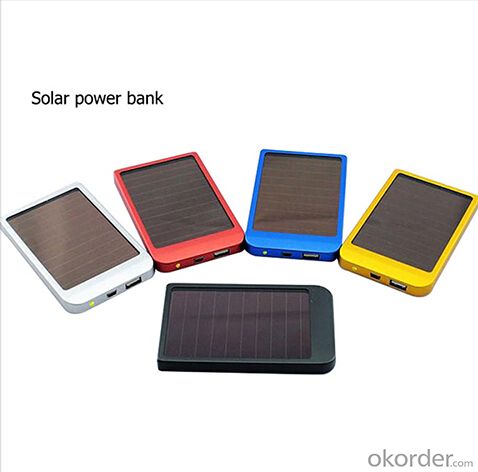
FAQ
1, What’s price per product ?
A: It’s depends on the quantity, delivery date and payment terms of the order. We can talk further about the detail price issue. Our products is high quality with lower price level.
2, How to make payment?
We accept T/T or L/C.
3, What is your lead time?
Generally 1-3 weeks depends on the order quantity and your specific requirements.
4, Can you do OEM for us?
Yes, we can.
5, How do you pack your products?
We have rich experience on how to pack the panels to make sure the safety on shipment when it arrives at the destination.
- Q: Can solar cells be used to power outdoor lighting systems?
- Yes, solar cells can be used to power outdoor lighting systems. Solar cells convert sunlight into electricity, which can be stored in batteries and used to power outdoor lights when the sun goes down. This allows for a sustainable and energy-efficient lighting solution, especially in remote or off-grid areas.
- Q: Can solar cells be used in residential homes?
- Yes, solar cells can definitely be used in residential homes. In fact, they are increasingly being adopted as a sustainable and cost-effective energy solution for households. Solar cells convert sunlight into electricity, allowing homeowners to generate their own clean and renewable energy. This not only reduces reliance on fossil fuels but also helps save money on electricity bills. With advancements in technology and decreasing costs, solar panels have become more accessible and efficient, making them a popular choice for residential homes worldwide.
- Q: Can solar cells be used in countries with limited sunlight?
- Yes, solar cells can still be used in countries with limited sunlight. While it is true that solar cells generate more electricity in areas with abundant sunlight, they can still function and produce energy in regions with less sunlight. Advances in solar panel technology, such as the use of more efficient materials and improved designs, have made it possible to harness solar power even in countries with limited sunlight. Additionally, the use of energy storage systems, like batteries, can help store excess energy generated during peak sunlight hours for use during low-light periods. Therefore, solar cells can still be a viable and sustainable energy solution in countries with limited sunlight.
- Q: How do solar cells perform in areas with limited sunlight?
- Solar cells perform less efficiently in areas with limited sunlight compared to areas with abundant sunlight. This is because solar cells rely on sunlight to generate electricity, and limited sunlight means less energy available for conversion. However, solar cells can still produce electricity in areas with limited sunlight, although at a lower rate, making it important to consider alternative energy sources or optimize the solar cell system's design for maximum efficiency in such areas.
- Q: Can solar cells be used in water heating systems?
- Yes, solar cells can be used in water heating systems. They can be used to capture sunlight and convert it into electricity, which can then be used to heat water through various mechanisms such as heating elements or heat exchangers. This allows for a more sustainable and cost-effective way of heating water, reducing reliance on traditional energy sources.
- Q: What is the maximum efficiency of a solar cell?
- The maximum efficiency of a solar cell refers to the highest percentage of sunlight that can be converted into usable electricity by the cell. Currently, the highest efficiency achieved by commercial solar cells is around 26-27%. However, in laboratory settings, experimental solar cells have reached efficiencies of up to 46%.
- Q: Can solar cells be used in floating solar farms?
- Yes, solar cells can definitely be used in floating solar farms. Floating solar farms, also known as floating solar panels or floating photovoltaic (PV) systems, are an innovative approach to harness solar energy by placing solar panels on a body of water. These systems offer several advantages such as increased energy efficiency due to the cooling effect of water, reduced land requirements, and minimized evaporation from the water surface. Therefore, solar cells are a suitable and effective solution for generating renewable energy in floating solar farms.
- Q: Can solar cells power an entire house?
- Yes, solar cells can power an entire house. With advancements in technology, solar cells are becoming more efficient and affordable. By installing a sufficient number of solar panels on the roof of a house, it is possible to generate enough electricity to meet the energy needs of the entire household, including powering appliances, lighting, heating, and cooling systems. Additionally, excess energy can be stored in battery systems or fed back into the grid for use during cloudy days or at night.
- Q: Do solar cells work at night or in low light conditions?
- No, solar cells do not work at night or in low light conditions because they require sunlight to generate electricity.
- Q: Can solar cells be used in museums?
- Yes, solar cells can be used in museums. They can provide renewable energy to power museum exhibits, lighting, and other electrical systems, reducing the reliance on traditional energy sources and minimizing the environmental impact. Additionally, solar cells can be integrated into the design of the museum building itself, enhancing its sustainability and showcasing a commitment to renewable energy.
Send your message to us
Solar Cells Silicon Portable Mobile Phone Solar Charger for 1800/2600/3500mAh Mobiles
- Loading Port:
- Shanghai
- Payment Terms:
- TT OR LC
- Min Order Qty:
- 1000 pc
- Supply Capability:
- 50000 pc/month
OKorder Service Pledge
OKorder Financial Service
Similar products
Hot products
Hot Searches
Related keywords
